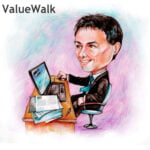The following is from a letter which Whitney Tilson sent to investors of Kase Capital, a copy of which was obtained by ValueWalk. The value investor is having a great year up 13.2% in H1 vs S&P 500 return during the same period of 7.1%. Full text can be found below.
UPDATE: 11:44AM EST: Performance numbers have been modified (higher) based on an updated letter provided to VW by Whitney Tilson.
Whitney Tilson…
July 1, 2014
Dear Partner:
After being on a tear for the past nine months, our fund took a breather in June, declining an estimated 0.3% vs. +2.1% for the S&P 500. Year to date, it is up 13.2% vs. 7.1% for the S&P 500 and 2.8% for the average equity hedge fund.
It was a strong month on the long side, led by Spark Networks Inc(NYSEMKT:LOV) (24.3%),Micron Technology, Inc.(NASDAQ:MU) (15.3%), Canadian Pacific Railway Limited(TSE:CP) (NYSE:CP) (8.1%), Air Products & Chemicals, Inc.(NYSE:APD) (7.2%) and Howard Hughes Corp(NYSE:HHC) (5.5%), partially offset by Fannie Mae (OTCB:FNMA) (-11.9%) and Sodastream International Ltd (NASDAQ:SODA) (-10.1%).
We gave back all of these gains and then some on the short side, as the Nasdaq jumped 4%, led by the most overvalued, promotional and/or fraudulent stocks, which tend to be the ones we’re short – things like Lifelock Inc(NYSE:LOCK) (24.3%), Organovo Holdings Inc(NYSEMKT:ONVO) (17.3%) and Textura Corp(NYSE:TXTR) (13.2%). The only winners of note on the short side were Genco Shipping & Trading Limited(OTCMKTS:GNKOQ) (-43.0%), which I covered last week, a new position in Quicksilver Resources Inc(NYSE:KWK) (-39.7%), and a China fraud, NQ Mobile Inc (ADR)(NYSE:NQ) (-18.8%). For the year, the fund’s attribution is -1% on the short side – decent performance in light of the market’s gains.
Market Overview and Portfolio Positioning
As the markets have continued to rise, extending one of the strongest bull markets in history, I’ve steadily been positioning the portfolio more conservatively, in part by trimming the fund’s long portfolio, as many of our holdings have risen sharply, but primarily by adding new positions on the short side (the fund’s current exposure is 101% long and 54% short).
In doing so, I’m following Buffett’s famous maxim: “Be fearful when others are greedy, and be greedy when others are fearful.” I can’t find much fear in any U.S. market – the Dow and S&P 500 hit all-time highs today; share buybacks are approaching the peak levels of early 2007, while the VIX, a measure of the S&P 500’s volatility, has fallen to lows not seen since then; bonds are once again offering return-free risk; and a headline in today’s NY Times read: “Mergers Hit a 7-Year High, Propelled by a Series of Blockbuster Deals.” And this complacency isn’t limited to the U.S. – it’s a global phenomenon. Heck, even the Iraqi stock market is only down 10.7% this year!
Such complacency would be understandable if the U.S. and global economies were firing on all cylinders and peace and prosperity abounded – but that’s simply not the case. U.S. GDP, after rising 2.6% in the 4th quarter, plunged 2.9% in Q1 (revised from an initial estimate of +0.1%), the economy’s worst performance since Q1 2009, in the heart of the recession. Bad weather was a meaningful factor, so Q2 may show a sharp rebound, but it’s hard to argue that U.S. economic growth is anything but tepid.
There are even more question marks around the world. Europe is mired in a long-term recession, hostilities resumed in Ukraine yesterday, the Japanese government is bankrupt, there may be an enormous housing/infrastructure/commodity bubble in China, and the Middle East, with 56% of the world’s oil reserves, is falling apart.
In light of all of this, you might ask why I haven’t positioned our fund even more defensively? There are a number of answers:
1) I think my edge as an investor lies in in-depth, bottoms-up analysis of companies and industries rather than being a macro prognosticator. Every once in a while I develop strong conviction about something like the internet and housing bubbles and position the fund accordingly, but this is something that only happens once or twice a decade.
2) Even with tepid U.S. GDP growth, corporate profits remain strong – especially those of the companies in which we’re invested.
3) Historically, bull markets have ended when one of two things happen: a) valuations reach extreme levels (30+ times earnings); and/or b) there’s an external shock (a major war breaks out, oil prices or interest rates spike, the housing market collapses, etc.). Regarding the former, the S&P 500 is trading at 19.3x trailing earnings today – on the high side of fair value perhaps but
certainly not bubble territory. As for the latter, I can come up with numerous doomsday scenarios – at the top of the list would be the world’s 2nd and 3rd largest economies, China and/or Japan, encountering major economic difficulties, war breaking out in Ukraine, or a disruption of Middle East oil supplies – but I have no conviction that any of these things are likely to happen in the near term.
Thus, I’ve only tweaked the portfolio rather than making wholesale changes. I continue to have conviction in every long and short position we hold and am confident that our fund will reflect this over time.












